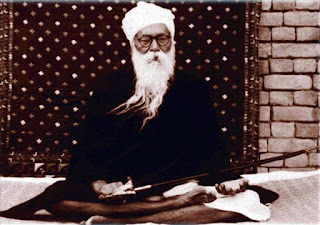Pakistan has several places associated with the Islamic, Buddhist, Hindu, Jain, Christian, and Sikh faiths. Potohar in Punjab, like other parts of Pakistan, has a variety of religious tourism attractions that may be promoted to both local and foreign visitors. Kanoha, located around 10 kilometres from Kallar Syedan town in Rawalpindi district, is one such place with enormous potential to draw both local and foreign tourists. Kanoha holds historical importance for Sikhs who fled Pakistan to Indian Punjab following the 1947 partition. The Gurdwara Tapiana Sahib is located in Kanoha, Kallar Syedan tehsil, Rawalpindi. Sant Attar Singh Ji of Mastuana (1866-1927) is said to have mediated in the forest near Kanoha known as Palahi di Jhangi (the forest of Cassia).
Before becoming a Sant, he served in the 54th Sikh Regiment, which was stationed at Abbottabad in 1885. Sant Attar Singh Ji used to spend most of his time praying, and he quit the army after four years. He began mediating in various areas around Punjab, including Muzaffarabad. Throughout time, a large number of individuals became his disciples. Sant Attar Singh Ji travelled to Thamali village at the request of his faithful pupils Bhai Wazir Singh and his wife Bhag Bhari, who asked for him to perform Akhand Paath (a three-day unbroken recitation of sacred melodies from the Guru Granth Sahib). After reciting the Akhand Paath, it is reported that Sant Attar Singh Ji stayed in the Gurdwara of Thamali for two days before going to mediate at Palahi di Jhangi near Kanoha and disappearing for several days. Bhai Wazir Singh, one of his followers, and his wife, Bhag Bhari, were worried about him. They ultimately tracked him down in a bush near Kahoha, where he was mediating. Subsequently, Sant Attar Singh Ji mediated in a Kutiya (hut) made for him by Bhai Wazir Singh in Kanoha. He also mediated at Luni, near Kallar Syedan town, although he spent most of his time in Kanoha.
Sant Attar Singh Ji launched a movement to teach people about the Gurmat (Guru tenets) and a religious way of life. Sant Teja Singh Ji (1877-1965), his major follower, continued to propagate his thinking and beliefs after his death in 1927. The University of the Punjab awarded Sant Teja Singh Ji an MA and an LLB. He later earned an MA from Harvard University. Sant Teja Singh Ji collected donations for the building of the Gurdwara Tapiana Sahib throughout the Potohar district.
Sant Teja Singh Ji began building on the Gurdwara Tapiana Sahib in 1935, on the site where Sant Attar Singh Ji performed tapas (austerities). Bhag Bhari, a devout devotee of Sant Attar Singh Ji, gave the land for the Gurdwara Tapiana Sahib.
Teja Singh Ji journeyed over the whole Potohar region in 1936, including Kallar, Kanoha, Thamali (now Dhamali), Beval, Kahuta, Choha Khalsa, Thoha Khalsa, Nara, Mator, Rawalpindi, and even further out to Peshawar, Kohat, and Nowshera. This was done to gather donations for the construction of the Gurdwara Tapiana Sahib's second story. Bhai Prem Singh Ji of Kahuta contributed to the completion of the third level of Gurdwara Tapiana Sahib. The dome or canopy above the Gurdwara Tapiana was built in 1940 with donations from the Potohar Sikh sangat (community).
The Gurdwara Tapiana Sahib is a three-story edifice capped with a canopy, a unique feature of Gurdwaras in the Potohari architecture. The Gurdwara Tapiana Sahib is square in shape. It was modelled after the Gurdwara Tarn Taran Sahib. Arches have been built on all four sides of the structure to enhance elegance. It features four entrances, one from each of the four cardinal directions. The western entrance, on the other hand, has been closed. Donor plaques may be seen over each of the doors. These Gurmukhi donor plaques include a wealth of information on the locations, individuals, and their contributions to the construction of the Gurdwara Tapiana Sahib at Kanoha. The plaques also provide information on the significant Sikh villages in the Potohar area.
The Gurdwara Tapiana Sahib's main entrance faces south. The main hall of the Gurdwara Tapiana Sahib is accessible through this entrance. The main hall has been partitioned into tiny cells that are flanked by broad recessed arches east and west of the main hall.
The presence of foliated pillars and inscriptions on the eastern wall is a distinguishing characteristic of the great hall. It was once decorated with paintings. Regrettably, the plaster has now peeled away.
There are around 21 donor plaques installed on the main doors and the first, second, and third level walls. The canopy also has three donation plaques. These donor plaques display the names and amounts donated. Some plaques display the amount provided by the donor in remembrance of their daughters, dads, and mothers. Teja Singh ji, an enthusiastic devotee of Sant Attar Ji, founded the Kalgidhar Trust, Baru Sahib, in 1965, which today operates 129 English-medium schools and two colleges in northern India, delivering a contemporary scientific education coupled with a spiritual character.
Considering the historical and spiritual significance of the Gurdwara Tapiana Sahib in Kanoha, Kallar Syedan tehsil, the authorities in charge should rehabilitate it and promote it as a religious tourism attraction. The Evacuee Trust Property Board (ETPB) should also devise a plan for providing information and organising tours to the Gurdwara Tapiana Sahib for Sikh pilgrims. They would have to emphasise the historic and spiritual significance of the site to Sikh pilgrims who come to Hassan Abdal to celebrate the Baisakhi festival at the Gurdwara Panja Sahib.






















0 Comments
Thanks you so much for your comment. We will reply to this shortly.